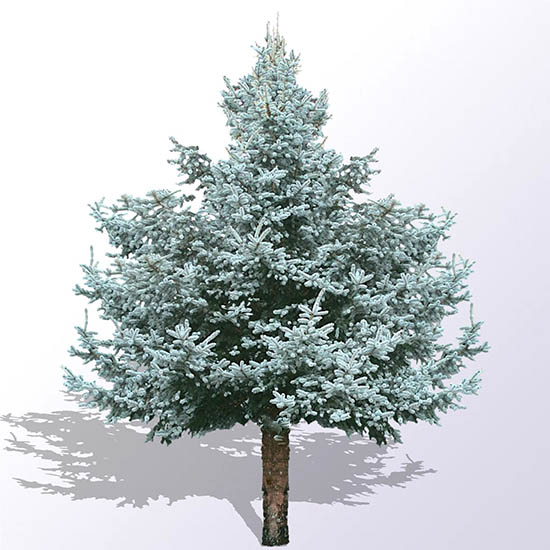
Spruce Trees for the Southwest
Spruce Trees for the Southwest. Most Spruce trees need regular watering. They are not drought tolerant and if you want them to look good they will a lot of water and a regular fertilizing schedule. You should water 3-4 times per week for the first 4-5 years after initial planting.
Will Spruce Trees for the Southwest Survive?
Yes, they will. They thrive in the Northwestern parts of New Mexico, Arizona, most of Colorado, and Utah. The USDA map says Spruce trees will work in zone 1-7. You can make them work in the lower regions of the Southwest but it is important to water consistently and plant them where there is afternoon shade if possible. This spruce tree does well in the desert southwest. Most folks think it won’t but with a little more care and water, it will work and thrive.
The Blue hoops spruce (Picea pungens ‘Hoopsii’)
A pyramidal form that holds stiff horizontal branches with dense silvery-blue mature needles. Full sun and fast-growing to 30 to 50 feet high, 10 to 20 feet wide. It is not drought tolerant so it does require regular watering, especially during the hot summer southwestern months for extensive root system growth. However, watering can be reduced after establishment usually 2-3 years down the road. This tree is a bright blue and more so with new growth.
Feed with a general-purpose fertilizer before new growth begins in spring. USDA Zones 6-9 Monrovia Photo
Colorado Blue Spruce (Picea pungens ‘Glauca’)

Another good spruce tree that will do great in the Southwest. This Evergreen conifer has a symmetrical, pyramidal form. Blue-grey pine needles and a moderate grower group to 40 to 60 feet high, and 10 to 20 feet wide. It can take full sun and is an excellent pine for that forest look.
This tree is not drought tolerant so it does require regular watering, especially during the hot summer southwestern months for extensive root system growth. However, watering can be reduced after establishment usually 2-3 years down the road. Feed with a general-purpose fertilizer before new growth begins in spring. USDA Zones 6-9.
The Fat Albert Blue Spruce (Picea pungens)
This Blue Spruce will do well in the desert Southwest the USDA zone is 2-8. Rich blue dense needles that will add some color to any Southwestern-style home. It is a slow grower and the one pictured above is about 3-4 years of age. It does need to be watered regularly during the first 3-4 years after initial planting. It will eventually grow up to 40 ft. tall and 30 ft. wide. Very wide within 20-30 years or so thus its name “Fat Albert blue spruce“.
Photo Alberta blue spruce (Picea glauca ‘Conica’)

This Evergreen conifer has a symmetrical, pyramidal look. Green to lime green pine needles. Slow grower. It can take full sun and is an excellent pine for that pine forest garden look. Excellent as a tub plant or miniature Christmas tree.
In the hot desert Southwest, this conifer needs shade…Underneath another larger shade tree will work great. You can also place it in the north or northeast side of your home.
It looks good in a formal type of garden setting. It likes partial sun only. It will only grow to about 6 feet to 8 feet tall and 4 to 5 feet wide; larger with age. Can be used as an indoor Christmas Tree then planted outside after the Holidays. Cone-shaped dwarf conifer displaying dense dark green needles. Excellent as a tub plant or miniature Christmas tree. NOT a drought-tolerant tree. USDA Zones 3-7.
Problems with Spruce Trees
These trees are hardy but they are susceptible to Dieback or Cytospora Canker. Basically the tips turn brown and the tree will start to lose branches and needles. There is no cure for Cytospora Canker but the tree will continue to live for years. It is a fungal disease that usually occurs in places where there is lots of rainfall. The best thing to do is to trim off dead or dying branches. Be sure to clean your pruners before using other healthy branches or trees. It’s also important to consistently clean all debris from underneath the tree.
Learn more about the Spruce trees on Wikipedia.

